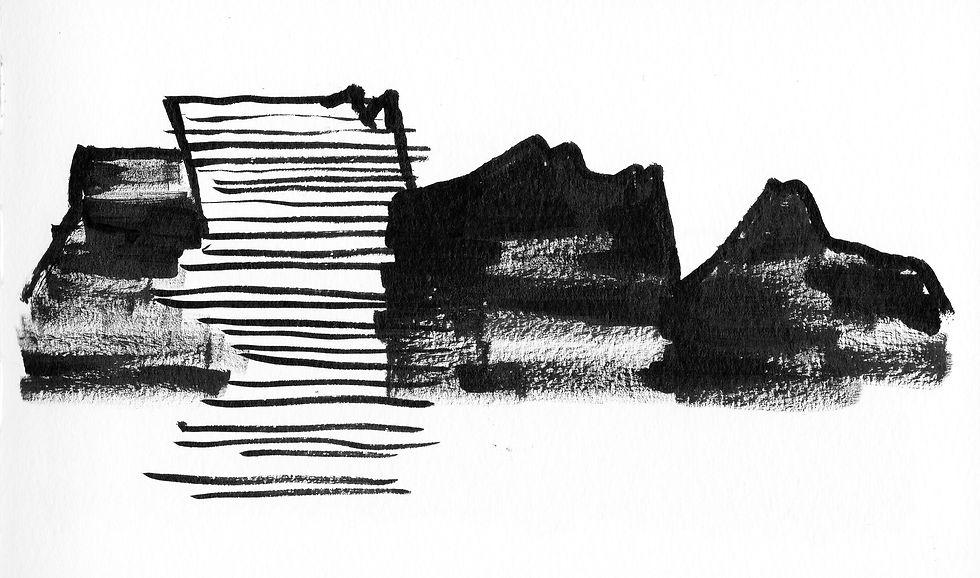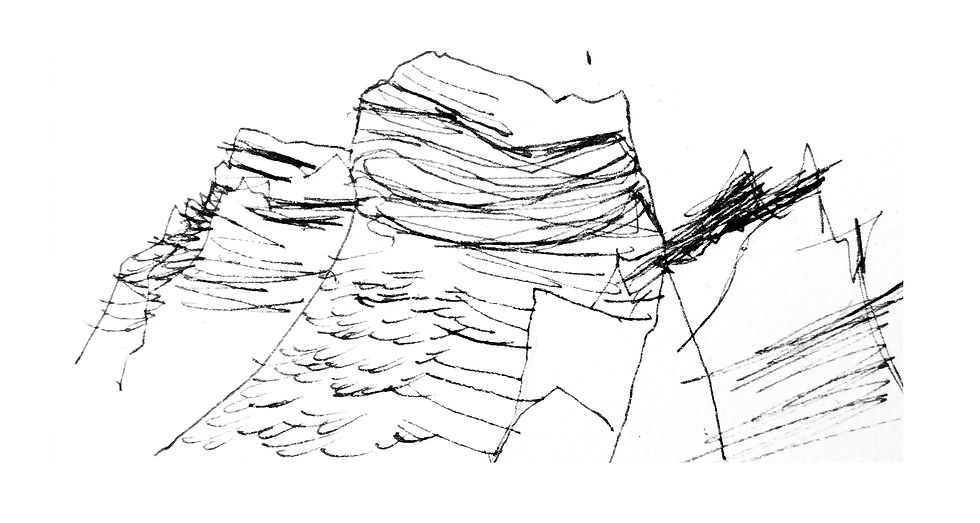Progetto Borca
Borca di Cadore (BL)
curated by Dolomiti Contemporanee
artistic residence 2018 - 2020












Sguardo
About looks that chat while they look at each other
My look resembles an instant photograph, it is tied to time and moment.
When I arrived in early spring, there was still some snow on the mountains. I am at the entrance of the colony, at the base of Mount Antelao. Across the valley another mountain stands, Mount Pelmo. This is the landscape of Borca di Cadore.
Before arriving at the colony, I thought of focusing on a research on the relationship between architecture and the territory. Perhaps this search would have made sense when the colony and village were used as a vacation spot. After the site was divested, the buildings of the colony began a process of transformation. Now that they are no longer inhabited as they once were, their relationship with the territory is perceived as a dialogue based on transformations over time. It is a dialogue between stone and concrete, between Mount Antelao and the colony.
It is a snapshot, as a figure of speech, to say that two shots with different shutter speeds overlap in this image.
So it is a dialogue that speaks about themes, such as the transformation through time and the speed with which transformations occur, but also about hierarchies and the shape that hierarchy can adopt, vertical in the case of the mountain and horizontal in the case of architecture. Erosion and degradation that carve stone and concrete and give life to new forms, new spaces and ways of living.
When Mount Pelmo speaks, from far away, it does it with horizontal lines marked by snow on the folds of her surface. When Mount Antelao speaks, it does it through small constant scratches that climb upwards. The architecture speaks with long and horizontal slippery signs that adapt to the shapes of the mountain. Words intersect as the texture and warp of an irregular fabric where sometimes windows are created, from which the mountain enters architecture.
Now, I am inside the colony, in a labyrinth of dark ramps, which are covered for long stretches and which always seem to lead to the starting point. I follow a road marked by funny lights projected on the floor. I constantly look for a window that allows me to see the Pelmo to have a point of reference with the outside, because the colony seems a world apart, full of images like those of children on holiday, in the dormitories or that of the animals which at night cross the corridors of the buildings (the mountain insists on entering architecture and inhabiting the spaces that have remained empty). Sometimes, in the middle of the dark corridors, a door opens, and a space, a study or a laboratory lights up and other paths, other reconstructions and other worlds begin from here.
I arrived at the colony one day in early spring. The snow covered only some parts of the mountain and left the others bare, highlighting all the folds of its body. Another day, the landscape will be different, because the colony and the mountain are constantly changing, they breathe, and my look will be different too.
Paulina Herrera Letelier
Gabbia dell'orso
Reflections on the shadows, lights, and different perspectives of the cage and the runaway bear
The shadows of the prison irons, projected on the bare skin of this space, on the lines of the skin, form that cage made of shadows, of the sides of a volume, projected on a plane. Here again I find a common language, I find a mesh of a fabric. Soft fabric that moves through the day, that frays with time and wears away with the darkness of night until it disappears. The bear goes into the mountain.
The shadows of the cage structure, cast on the lines of the concrete wall formations, form ephemeral textures and volumes. These shadows were the subject of study during the residency, leading to the creation of a series of watercolor and silkscreen works, the construction of a pyramidal structure, and the design and fabrication of a wood and linoleum seat.
An installation with some of these works was set up inside the cage during the open studio.








Jaula del oso Misha
Una vez hubo un oso
Una vez hubo unos niños.
La jaula está en tu piel,
Es la parte que queda escondida detrás de la sombra.
Detrás de la sombra está el espacio, gracias a ella se definen los volúmenes, sin lineas
Como un baño de noche profunda.
En la noche la jaula no se ve, no se ve ni siquiera la piel. Tampoco el cemento.
Escapa oso! Entra en la montaña.
Capanna media
Shelter on the road now, in 2020
Today, I go back to work in the medium hut studio, continue to think about the cage, its material and the shadows that give body to its volume. Today, I work with clay.
Again on shadows and oblique space:
Here again among the oblique walls of the cage, after chasing the continuous shadow for two years, today I realize that I will not get there but, I will never find it. If I could stop time now, I would reach out to touch her as she draws the space of the cage diagonally, with sunny geometry.
I let her go and turn my gaze.
Now I look for the broken shadow,
because as I look at her projected on one of the walls, that is there. But when I look toward the other wall, that one has already moved.
Continuous space and still time
Continuous time and broken space









Capanna media: the study
The middle hut, like the other huts in the colony, was a meeting space for small groups of boys. The huts housed the recreational activities that took place during the afternoons: they were nestled in the woods and away from the rest of the common areas. They were the end point of long corridors that connected them with other parts of the building.
The research activated this space by using it as an artist's studio, workshop and exhibition space.